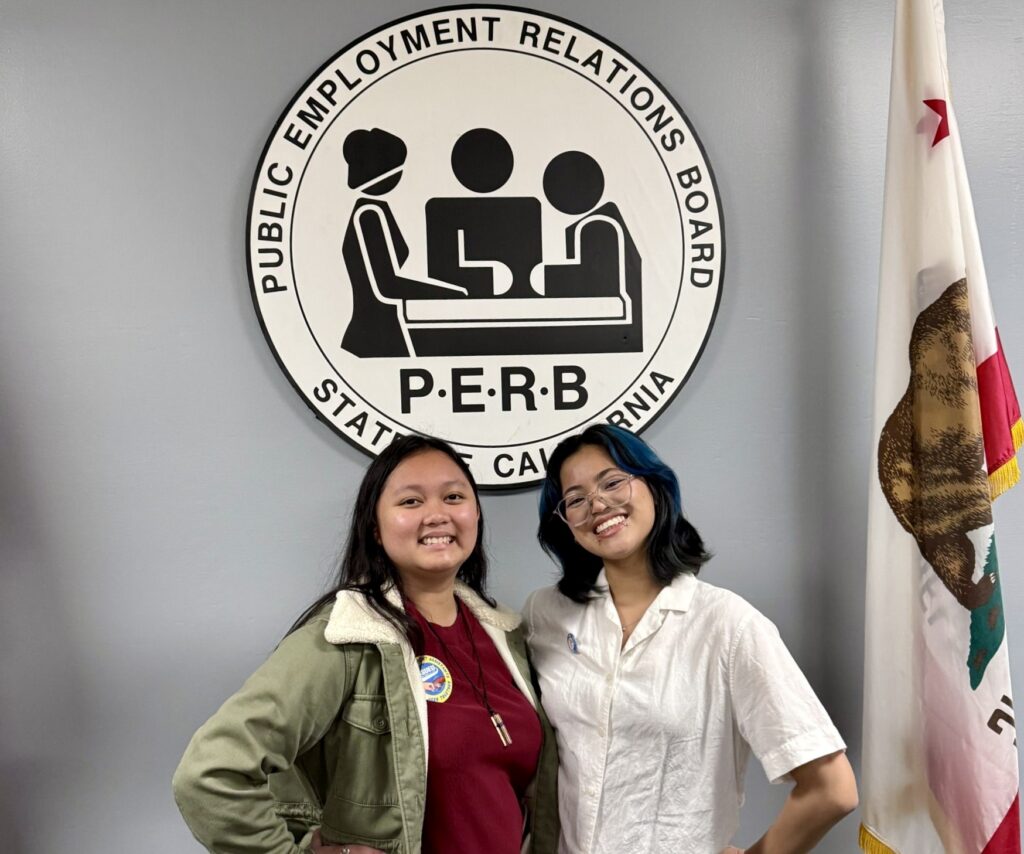
High school students conduct a science experiment with their teacher, right.
Credit: Allison Shelley for American Education
It’s not hard to imagine why we are currently confronted with a crisis of teacher burnout. After decades of being severely underpaid while costs of living skyrocket, combined with heightened safety issues and the incredible stress of the pandemic, it’s no wonder why countless teachers across the country are fleeing the profession.
It has resulted in a national teacher shortage that we are experiencing acutely in California. According to the California Department of Education, there were more than 10,000 teacher vacancies during the 2021-22 school year, particularly concentrated in rural communities, communities of color and low-income communities, as well as a 16% reduction in new teacher credentials, the first decline in nearly a decade.
Even when people decide to make the courageous decision to become teachers, it’s becoming increasingly difficult to ensure they stay in the profession. A recent nationwide survey found that 1 in 3 teachers say they are likely to quit in the next two years.
It’s a dire crisis that must be addressed with urgency, coordination and innovative solutions. As state superintendent of public instruction, I have partnered with educators and legislators across California to craft teacher recruitment and retention policies that comprehensively confront this momentous challenge.
SB 765, which Gov. Gavin Newsom recently signed, will help develop a statewide recruitment strategy that’s never been seen before, incentivizing longtime, qualified educators back in the classroom to provide short-term help and removing financial barriers to those attempting to enter the profession.
The financial incentives include expanding the Golden State Teacher Grant Program to provide a $20,000 scholarship for anyone who wants to be a teacher or school mental health clinician, as well as a $10,000 undergraduate scholarship for any student who is enrolled to become a tutor in our College Core program. It also offers people who complete the National Board for Professional Teaching Standards certification a $5,000 annual grant for five consecutive years of their teaching career.
These measures are invaluable tools to provide bonuslike incentives for people from marginalized communities looking to enter the profession, which many believe is critical in hiring more teachers of color across the state to ensure that our classrooms actually look like California — something that greatly benefits every student.
We’re also working to expand outreach to specific communities that may have an interest in teaching in our state, including recently retired educators, the spouses of military personnel who have teaching backgrounds in other states, as well as recruiting from the ranks of the classified staff and expanded learning educators.
Teacher recruitment has historically been a disparate process that is executed at the individual district level. But due to the overwhelming scale of the crisis, we’ve made creating a coordinated statewide effort under the California Department of Education a top priority, including developing a one-stop portal that’s a resource for teaching credentials, scholarships and teacher openings throughout the state.
In addition to building a comprehensive teacher recruitment system, California must invest in providing desperately needed raises for educators. AB 938, which was introduced this year by Assembly Education Chair Al Muratsuchi but didn’t make it through the state Legislature, would have increased teachers’ salaries across California 50% by 2030, aiming to close the existing wage gap between teachers and similarly educated college graduates in other fields.
At a time when costs of living in our state, including the skyrocketing cost of a four-year degree, are greatly outpacing the rate of stagnating teacher pay, it’s absolutely essential that we fund a significant increase in pay so educators, including classified employees, can remain in the communities they teach in.
It’s one thing to recruit teachers to teach in local schools, but it’s another to retain them for decades in our communities. The best way to do that is by providing a living wage for educators in every California neighborhood. That’s why ensuring that teachers are properly compensated for their tireless work next year through the budget or a bill like AB 938 that would significantly increase their salaries is so important.
Ultimately, the best way to combat our teacher shortage crisis is by developing a coordinated recruitment strategy, increasing compensation and providing additional financial incentives to build a sustainable pipeline of educators in our communities. In California, we’ve invested in bold recruitment and retention strategies that, if paired with the doubling of teacher salaries, will be a comprehensive solution to this overwhelming crisis.
•••
Tony Thurmond is California’s superintendent of public instruction and a candidate for governor in 2024.
The opinions in this commentary are those of the authors. If you would like to submit a commentary, please review our guidelines and contact us.











